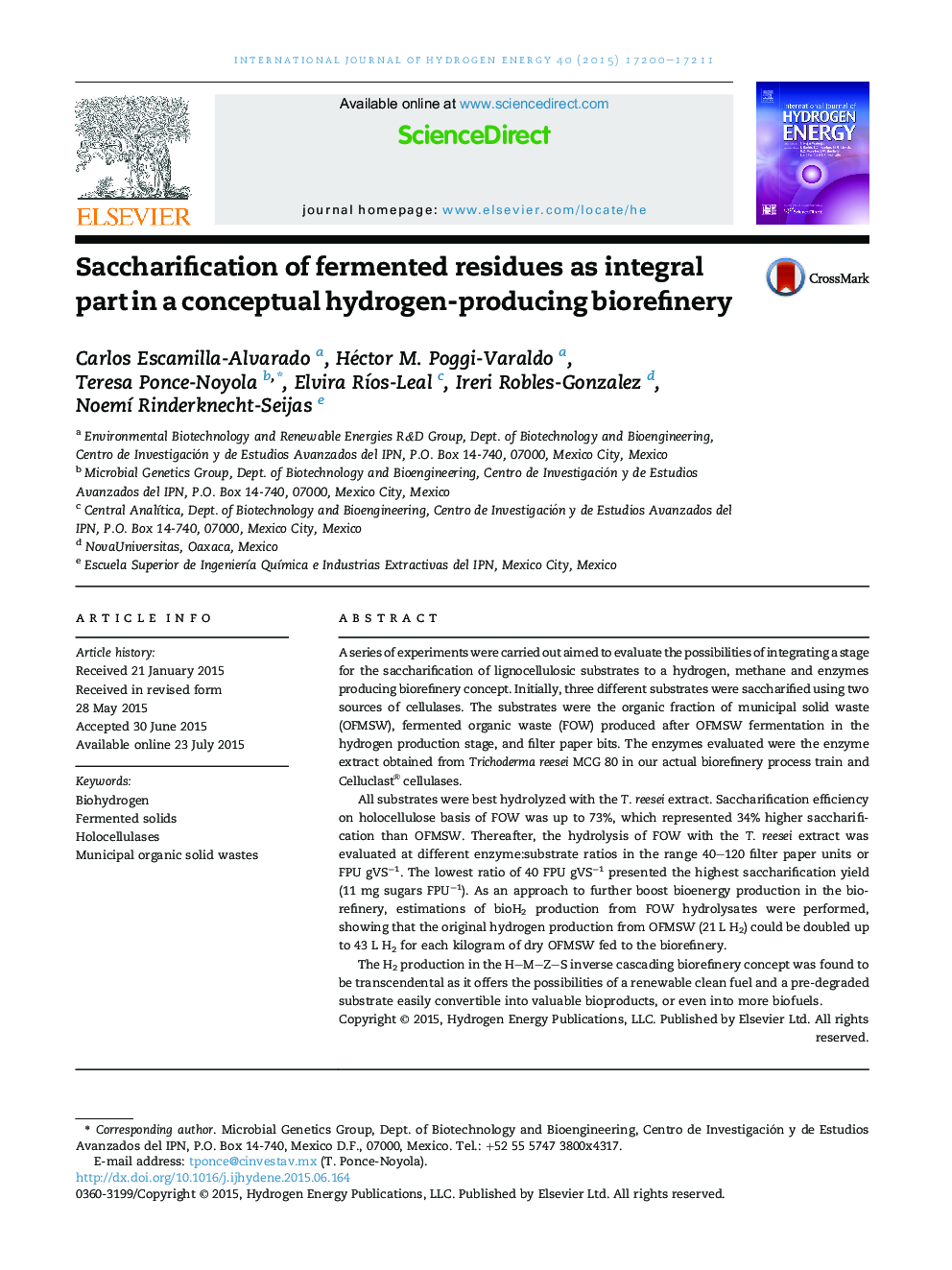| کد مقاله | کد نشریه | سال انتشار | مقاله انگلیسی | نسخه تمام متن |
|---|---|---|---|---|
| 1269007 | 1497425 | 2015 | 12 صفحه PDF | دانلود رایگان |
• Saccharification linked to a H2, CH4 and enzyme producing concept biorefinery.
• OFMSW, fermented organic waste and filter paper were saccharified.
• All substrates assayed were best hydrolyzed with the Trichoderma reesei domestic extract.
• Fermented organic waste exhibited up to 34% higher saccharification than OFMSW.
• Fermentation of hydrolysates would generate up to three fold more H2 in biorefinery.
A series of experiments were carried out aimed to evaluate the possibilities of integrating a stage for the saccharification of lignocellulosic substrates to a hydrogen, methane and enzymes producing biorefinery concept. Initially, three different substrates were saccharified using two sources of cellulases. The substrates were the organic fraction of municipal solid waste (OFMSW), fermented organic waste (FOW) produced after OFMSW fermentation in the hydrogen production stage, and filter paper bits. The enzymes evaluated were the enzyme extract obtained from Trichoderma reesei MCG 80 in our actual biorefinery process train and Celluclast® cellulases.All substrates were best hydrolyzed with the T. reesei extract. Saccharification efficiency on holocellulose basis of FOW was up to 73%, which represented 34% higher saccharification than OFMSW. Thereafter, the hydrolysis of FOW with the T. reesei extract was evaluated at different enzyme:substrate ratios in the range 40–120 filter paper units or FPU gVS−1. The lowest ratio of 40 FPU gVS−1 presented the highest saccharification yield (11 mg sugars FPU−1). As an approach to further boost bioenergy production in the biorefinery, estimations of bioH2 production from FOW hydrolysates were performed, showing that the original hydrogen production from OFMSW (21 L H2) could be doubled up to 43 L H2 for each kilogram of dry OFMSW fed to the biorefinery.The H2 production in the H–M–Z–S inverse cascading biorefinery concept was found to be transcendental as it offers the possibilities of a renewable clean fuel and a pre-degraded substrate easily convertible into valuable bioproducts, or even into more biofuels.
Journal: International Journal of Hydrogen Energy - Volume 40, Issue 48, 28 December 2015, Pages 17200–17211
